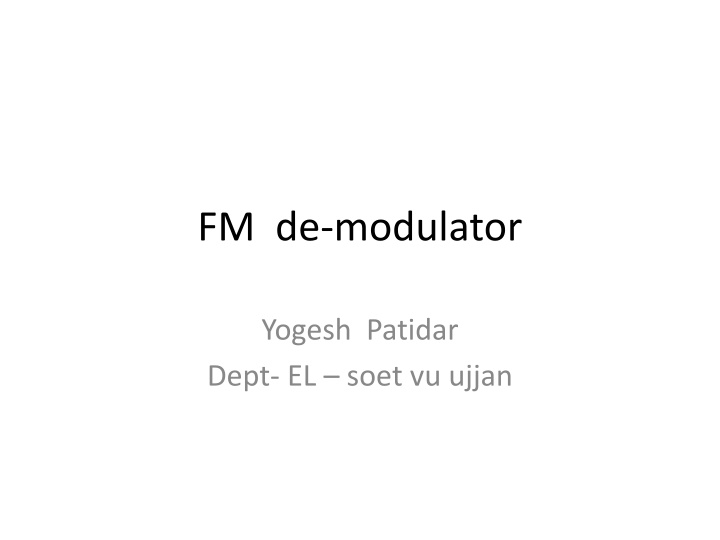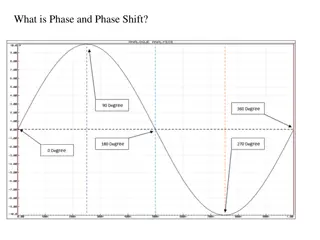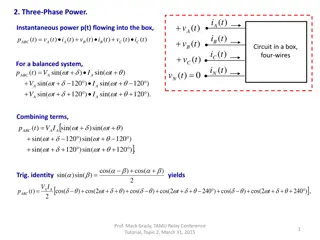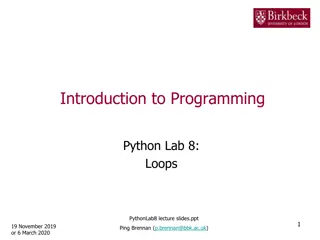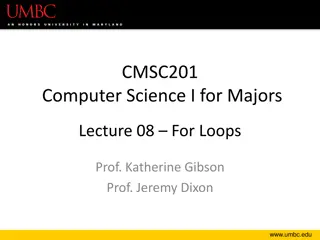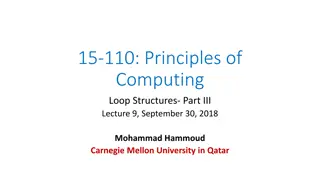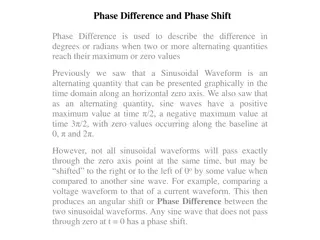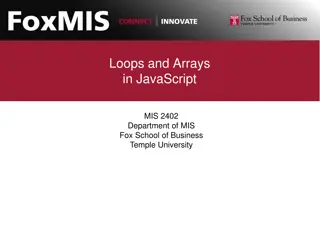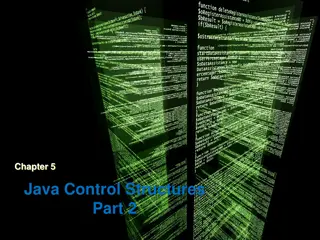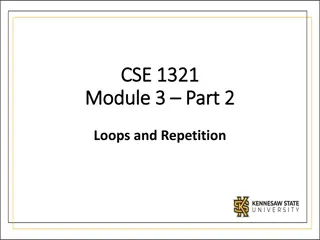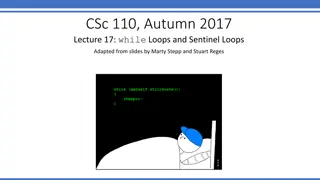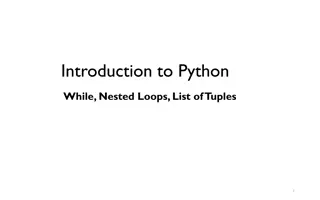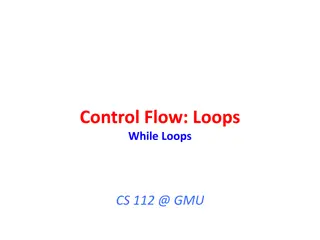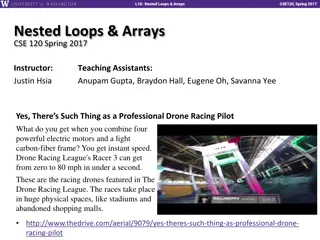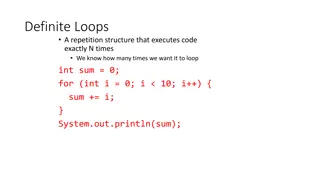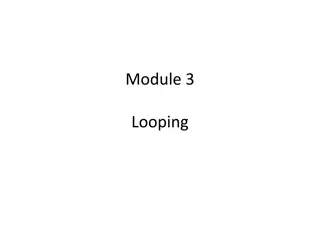FM Demodulators and Phase-Locked Loops
Explore the world of FM demodulators including Slope Detector, Foster-Seeley Discriminator, Ratio Detector, Pulse-Averaging Discriminators, Quadrature Detectors, and Phase-Locked Loops. Learn about demodulation, Foster-Seeley Discriminator operation, advantages, and disadvantages, as well as the concept of phase-locked loops in communication systems.
Download Presentation

Please find below an Image/Link to download the presentation.
The content on the website is provided AS IS for your information and personal use only. It may not be sold, licensed, or shared on other websites without obtaining consent from the author.If you encounter any issues during the download, it is possible that the publisher has removed the file from their server.
You are allowed to download the files provided on this website for personal or commercial use, subject to the condition that they are used lawfully. All files are the property of their respective owners.
The content on the website is provided AS IS for your information and personal use only. It may not be sold, licensed, or shared on other websites without obtaining consent from the author.
E N D
Presentation Transcript
FM de-modulator Yogesh Patidar Dept- EL soet vu ujjan
different types of FM demodulators Slope Detector. Foster-Seeley Discriminator. Ratio Detector. Pulse-Averaging Discriminators. Quadrature Detectors. Phase-Locked Loops.
Demodulation Demodulation is extracting the original information-bearing signal from a carrier wave. demodulator is an electronic circuit (or computer program in a software- defined radio) that is used to recover the information content from the modulated carrier wave
Foster-Seeley Discriminator Foster seeley detector consists of a special center-tapped transformer feeding two diodes in a full wave DC rectifier circuit. When the input transformer is tuned to the signal frequency, the output of the discriminator is zero
Continue When there is no deviation of the carrier, both halves of the center tapped transformer are balanced. As the FM signal swings in frequency above and below the carrier frequency, the balance between the two halves of the center-tapped
Advantages of Foster-Seeley FM discriminator: Offers good level of performance and reasonable linearity. Simple to construct using discrete components. Provides higher output than the ratio detector
Disadvantages of Foster-Seeley FM discriminator: Does not easily lend itself to being incorporated within an integrated circuit. High cost of transformer. Narrower bandwidth than the ratio detector
phase-locked loop (PLL) A phase-locked loop or phase lock loop (PLL) is a control system that generates an output signal whose phase is related to the phase of an input A phase-locked loop (PLL) is an electronic circuit with a voltage or voltage-driven oscillator that constantly adjusts to match the frequency of an input signal. PLLs are used to generate, stabilize, modulate, demodulate, filter or recover a signal from a "noisy" communications channel where data has been interrupted
PLL COMPONENT Phase detector: As the name implies, this circuit block within the PLL compares the phase of two signals and generates a voltage according to the phase difference between the two signals. Voltage controlled oscillator, VCO: The voltage controlled oscillator is the circuit block that generates the radio frequency signal that is normally considered as the output of the loop. Its frequency can be controlled over the operational frequency band required for the loop. Loop filter: This filter is used to filter the output from the phase comparator in the phase locked loop, PLL. It is used to remove any components of the signals of which the phase is being compared from the VCO line, i.e. the reference and VCO input
Ratio Detector The ratio detector is a type of detector circuit, commonly used in radio receivers for demodulating frequency modulated signal. The ratio detector is a variant of the Foster- Seeley discriminator, but one diode conducts in an opposite direction, and using a tertiary winding in the preceding transformer
